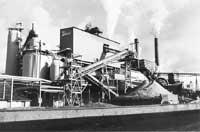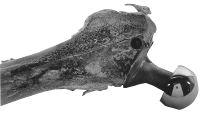Only green is natural?
1995/08/01 Aranburu, Arantxa Iturria: Elhuyar aldizkaria
On the occasion of the inauguration of the Leitzaran motorway, several articles have been published in the press. In the words of some, the “work”, which has meant so much, has had a very good ending, all the green slopes, the possibility of enjoying spectacular views in the rest areas,...
Behind these meanings is the shadow of what in recent years is hidden in our society under the word “ecological”: the praise of green. I explain it. If you look at advertising cars, for example, the eco-friendly car (will it really be eco-friendly?) will appear green; when going to the gas station, unleaded gasoline is identified with the green color; and similarly with the color of the soap box to wash clothes without phosphates or other things. Around this green color is read the message “natural equal green” and therefore “the more green and natural, or more ecological” and although it is not a lie, it is not entirely true. On the Cantabrian highway, at the height of Saltacaballos, is a cement wall of several meters painted green. Is it possible that it has been painted to reduce the visual impact but therefore more natural/ecological?
As a result, in recent years the injection of grass seeds and the planting of trees has been promoted to minimize the environmental impact of public and private works such as the Leitzaran motorway. Logically, comparing with the nets of the past slopes or with the cement covers, there is no denying, a big step has been taken. It was time to see the green on the roadside! But despite this, now, should we address “indiscriminate equality”? When giant “works” like Leitzaran are made, new slopes open that, although not green, are very interesting and often spectacular (looking!) appear; I mean rocks and their fossils, traces and structures.
(Rocks that in Zumaia present the Cretace-Tertiary border). In addition, taking into account the vegetation of our territory, except in slopes of this type, there are few possibilities of knowing the information that hides the terrain. Therefore, although ordinary people have not yet been taught to read the history of rocks, in some cases rocks as natural and spectacular as plants deserve respect, even if they are not green.
I know, in many cases the essential thing is to fix the slopes with vegetation or make walls of cement, but lately I fear not to be done without thinking too much. I would like to know if when making this type of cuts someone thinks what can be done with them or if you order directly the implantation of plants as a mandatory formula!
With this I do not mean that all the slopes are left naked, nor that they are against the vegetation. Before you blindly change the plants or sow the seeds, with the help of those who, seeing the slope, see more than pieces of stone or corrupt soil, I mean that we should observe if there can be something “other” interesting, and in that case respect at least, that is, not cover. If in one of these slopes there were remains or bones of dinosaurs so known today, would we cover them with grass? What if they have already explained it and covered it with grass?

Gai honi buruzko eduki gehiago
Elhuyarrek garatutako teknologia






